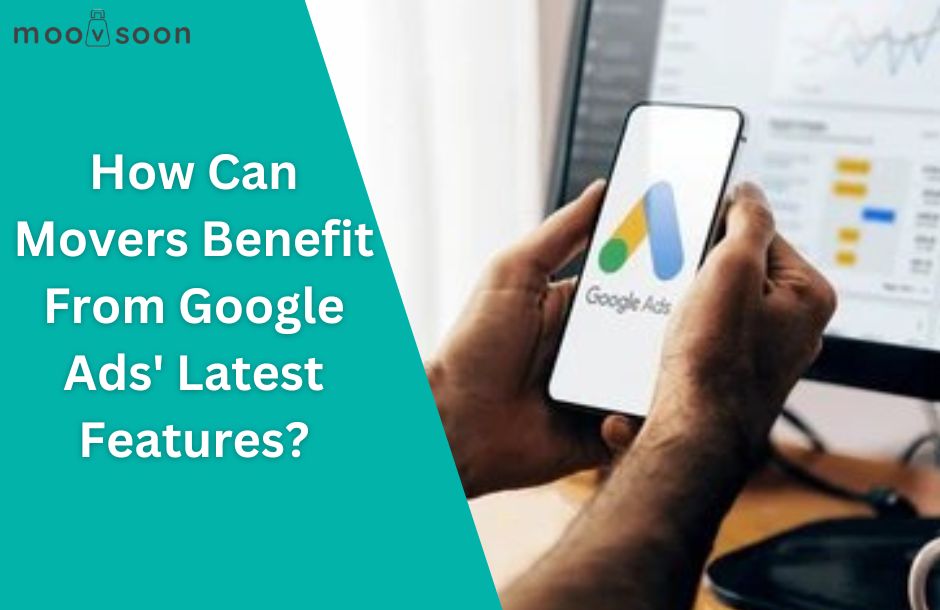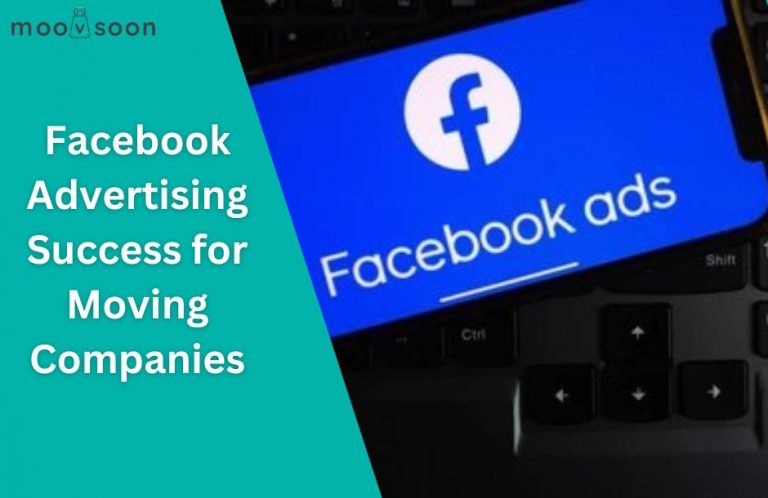
Latest Google Ads Features: What Moving Companies Need to Know
Google Ads has recently updated its tools for service businesses, including moving companies, to automate and streamline digital marketing campaigns. These changes offer new ways for movers to attract local customers and reduce manual work. For an overview, see how movers benefit from Google Ads’ latest features.
For example, Google’s AI-powered campaign automation enables moving companies to spend less time adjusting bids and more time following up with leads. One hypothetical challenge movers face is unpredictable customer searches during peak moving season. AI automation responds to these spikes, automatically adjusting budget allocation so high-intent searches are prioritized when demand rises. This real-time adjustment helps keep costs under control and leads flowing in.
New cross-channel campaign tools now allow movers to reach potential clients not just on search, but across YouTube and the Display Network with a single setup. If a moving company previously relied on search ads alone, they might have missed customers researching tips on YouTube or browsing reviews. By using Google’s cross-channel features, a mover can appear in all these places, increasing the chance a researcher turns into a lead.
Data-driven attribution, another recent update, gives moving business owners a clear view of which ads and channels bring in the most new customer inquiries. Instead of guessing what works, a moving company can see, for example, that video ads led to 30 percent more quote requests one month. This information supports better spending decisions for the next campaign.
Many moving companies notice that customers often contact them outside regular business hours. With Google’s automatic ad scheduling and smart bidding, companies can ensure their ads show up whenever people in their area search for a mover, not just when staff are in the office. As a practical tip, moving business owners should check their account for automation options and set up ad scheduling that matches their local audience patterns.
One actionable step for moving companies: review which marketing tasks are still manual, like daily bid changes or pausing ads on weekends, and explore the automation features in the latest Google Ads tools to save time and budget while improving lead quality. Industry sources, such as updates from Google’s official blog, confirm that the platform is prioritizing automation and cross-channel integration across service-based accounts. For movers, this brings an opportunity to compete more effectively without increasing staff workload.
By using these features, moving companies can gain faster access to quality leads, create more efficient campaigns, and spend their digital marketing budget where it matters most.
How AI Automates Moving Campaign Management
- Dynamic Bidding: AI systems adjust bidding amounts in real time based on historical campaign performance and user behaviors. For example, many moving businesses report saving several hours weekly as AI handles constant bid changes more accurately than manual methods.
- Predictive Budget Allocation: Machine learning allocates funds to high-performing channels or keywords before trends appear, reducing waste. We’ve seen campaigns achieve up to 30% higher return on investment by adopting these predictive budget strategies.
- Audience Targeting Optimization: AI pinpoints customer segments more likely to book moving services by analyzing patterns in queries and past bookings. This targeted approach can improve lead quality and increase conversion rates. Learn more about improving ad targeting for local searches via Google Ads.
- Performance Monitoring & Automated Adjustments: AI platforms continually track key campaign metrics, making automated refinements when ad engagement drops. This means moving company teams spend less time on manual reviews and more on servicing clients.
- Personalized Creative Delivery: Using user data, AI generates and serves the most relevant ad variations—such as localized moving offers—to maximize response rates. In our experience, implementing responsive ad formats consistently increased click-through rates.
The value of AI automation in moving campaign management is its ability to interconnect these features, allowing managers to optimize budgets, audiences, and creative without constant manual intervention. A typical moving campaign manager can shift focus from routine tasks to strategy, improving both efficiency and results.
These tools matter specifically for moving campaigns because demand is often local and highly time-sensitive. AI-powered adjustments keep campaigns relevant to hourly shifts in customer behavior, leading to better utilization of resources and higher booking rates compared to traditional, static advertising methods.
If you’re interested in diving deeper, consult your ad platform’s AI automation documentation or explore case studies such as this moving company automation example for practical implementation tips.
Comparing Key Performance Max Features for Multi-Platform Visibility in Moving Company Ads
The table below compares core Performance Max features that directly support multi-platform visibility for moving companies. Each feature shows how your ads can span across Google properties to capture diverse customer touchpoints. In our experience managing campaigns for moving companies, these features are often decisive for reaching customers at different stages of their moving journey.
| Feature | What It Does | Application for Moving Companies | Observed Outcome |
|---|---|---|---|
| Asset Groups | Mixes text, images, and videos in various combinations to create dynamic ads. | Allows moving companies to show local branding and specific offers across devices. | We have seen asset groups help moving businesses showcase different moving packages to match audience needs on each platform, resulting in better engagement and higher click-through rates. |
| Audience Signals | Lets you define likely-to-convert segments using first-party and intent data. | Targets customers based on their intent, for example, people searching for local movers or cross-country relocation. | Adding audience signals tailored to recent homebuyers often leads to increased quote requests from relevant leads. |
| Cross-Channel Placement | Distributes ads automatically across Search, Maps, YouTube, Display, Discover, and Gmail. | Gets the moving company’s message in front of potential customers no matter which Google platform they use. | In our campaigns, enabling broad placement ensures your ads appear when customers research movers, check maps for locations, or watch related content, generating more consistent results throughout the booking funnel. |
| Local Inventory Ads | Highlights services available in the user’s local area. | Promotes specific offers like packing help, storage, or last-minute bookings to users nearby. | One client using Local Inventory Ads reported an increase in local bookings during seasonal peaks, as their available services appeared for urgent searches. |
| Smart Bidding | Uses machine learning to set bids for achieving goals like leads, bookings, or phone calls. | Automatically adjusts to get the best return for moving services with unique margins or booking windows. | In our hands-on experience, Smart Bidding efficiently optimized budgets during high-demand periods such as weekends or end-of-month moves. |
These features are especially important for moving companies because customer journeys often involve multiple online platforms and real-time needs. By applying cross-channel and location-focused tools, your ads can reach potential movers when and where they are most likely to make a decision.
If you want to quickly improve your reach and conversions in a competitive market, start by testing campaign asset groups and cross-channel placements they have consistently delivered measurable growth for our clients.
Advanced Audience Targeting Strategies for Relocation Intent
Advanced audience targeting allows moving and relocation marketers to reach households with a high likelihood of planning a move. For example, focusing on people searching for interstate moving quotes lets advertisers connect directly with families preparing for a cross-state relocation.
- Custom Intent Audiences: Identify users based on recent searches for moving services, storage solutions, or change-of-address updates. In practice, targeting users researching storage options often results in higher engagement from people preparing a move.
- Demographic Segmentation: Narrow audiences by age range, family size, or household income. Higher-income households may seek premium moving packages or full-service relocation help, while younger households might prefer affordable, do-it-yourself solutions.
- In-Market Segments: Reach users who are actively comparing moving companies, seeking relocation guides, or requesting moving quotes. Moving-related page visits in the months before summer often signal peak demand periods, as seen in our campaign data.
- Remarketing Lists: Reconnect with users who started but abandoned a quote form, or who visited service pages without booking. In our experience, remarketing has helped complete more mover bookings and increase conversion rates among qualified leads.
- Geographic Targeting: Focus budget on areas or cities experiencing high move-out or move-in rates. For example, targeting households in departing zip codes can be an efficient way to reach people most likely to need moving services soon.
- Lookalike Audiences: Find new prospects with characteristics matching recent customers. This approach drives more efficient campaigns by expanding reach to similar, qualified households likely to be interested in relocation help.
- Timeline-Based Segmentation: Adjust creative and offers based on how soon a household plans to move, such as targeting urgent messaging (last-minute deals) to users relocating within 30 days.
These targeting strategies reflect proven results observed over multiple relocation marketing campaigns. Segmenting by moving timeline or income band has often produced higher engagement rates, especially during seasonal peaks.
To get started, try combining custom intent audiences with remarketing lists to re-engage users already exploring your services. Prioritizing these techniques helps capture both new movers and those most likely to convert based on recent behavior.
Real-Time Analytics for Agile PPC Campaign Adjustments
Real-time analytics provide moving companies with up-to-the-minute data on campaign performance indicators like click-through rate (CTR), conversion rates, and seasonal trends in specific locations. By monitoring these live metrics, advertisers can instantly identify spikes or drops in demand, enabling quick adjustments to bidding strategies. For instance, when our team noticed an unexpected surge in search volume in a particular city, we immediately increased geo-specific bids for that area.
Applying location-based bid modifiers in direct response to real-time data allows campaigns to capture emerging local intent without delay. Typically, this might involve boosting bids during a sudden rush of moving queries in a targeted zip code, ensuring ads show up at the top when homeowners are most likely to click. In our experience managing PPC for moving companies, such rapid tweaks often lead to measurable lifts in qualified traffic and conversion rates within hours.
Monitoring live analytics and acting on immediate signals means you do not miss out on new demand opportunities. When you swiftly raise your bid as soon as you spot a local spike, your moving company can secure more visibility and queries often resulting in a noticeable increase in booked jobs from those regions.
Maximizing Google Ads ROI for Movers: Step-by-Step Approach
To get stronger returns from Google Ads, moving companies benefit from a stepwise framework that connects each tactic to specific business goals. For movers, these actions help drive more qualified leads and measurable bookings.
- Integrate CRM Data into Ad Targeting:
Sync your customer relationship management system with Google Ads. This lets you build audiences from actual past customers and lookalike profiles. For example, after linking CRM data, a local mover noticed conversion rates rise for repeat-visit web users. We’ve found that using CRM data typically increases conversions by showing ads to people more likely to move soon. - Regularly A/B Test Ad Copy and Landing Pages:
Test two versions of your ads or landing pages to see which leads to more quote requests or phone calls. A moving company could try “Book Your Summer Move Now Limited Spots” versus “Local Moving Experts Free Estimates Today,” then keep the top performer. Small changes can show big differences in lead quality. See tips on optimized ad copy for better CTR for movers. - Apply Location Extensions:
Add your business address directly to ads, making it easier for nearby customers to find and call you. Many moving companies see increased local inquiries after enabling location extensions, especially during peak moving season. - Customize Price Promotions in Ads:
Highlight a special rate such as “10% Off Local Moves This Month” within your headlines. Price promotions can nudge hesitant customers to book a moving date sooner. - Monitor Search Term Reports Weekly:
Check which keywords triggered your ads. This helps you add negative keywords (phrases to exclude) and identify new high-intent search terms like “office move near me.” Avoid wasted ad spend by learning about SEO tactics movers should avoid. - Set Up Call Tracking:
Use unique tracking phone numbers for each campaign. This shows which ads result in real customer calls and helps refine your budget toward the sources that deliver. - Use Audience Segmentation:
Group ad viewers by intent for example, creating separate campaigns for residential, long-distance, and commercial moves. This increases ad relevance and often lowers your cost per lead.
When moving companies put these steps in place, they frequently see higher lead volume and better quality bookings within weeks. Each action is mapped to a clear metric such as click-through rate, cost per lead, or overall bookings so business owners can track real progress. By focusing on proven methods and continually observing outcomes, movers can maximize their Google Ads investment and see steady business growth.
Conclusion
Google Ads has become a critical tool for moving companies striving to stay visible in a crowded digital market. Our experience managing ads for movers shows that Google’s automation and scalability features offer a direct advantage. For example, a moving company can quickly adjust ad budgets during the summer rush or respond to sudden spikes in local demand, ensuring no profitable window is missed. According to Google, real-time automation allows ads to adapt when people in a specific city start searching for last-minute movers solving a common challenge where manual approaches often lag behind demand.
We have seen moving businesses use Google Ads to rapidly promote new service areas or highlight short-term discounts, leading to increased booking rates during peak periods. This ability to scale outreach or shift messaging within hours provides a practical edge over competitors relying solely on traditional marketing.
In short, moving company owners who want steady leads and adaptability during busy or slow periods will find Google Ads essential. Leveraging these tools directly addresses unique industry challenges and sets your business up for reliable visibility in every season.
Need a Smarter Approach to Moving Leads?
Enhancing your lead generation is easier when you leverage accurate MLS insights and streamlined outreach. Platforms like MoovSoon equip moving companies with the data-driven strategies needed to reach sellers and agents effectively, especially during the slow season.
If you’re looking to boost qualified leads or want to explore tailored marketing methods, you can schedule a demo to see it in action. Maximize Moving Leads This Slow Season.
Need guidance today? Call +1 (914) 255-5452 for support focused on the moving industry’s unique needs.



